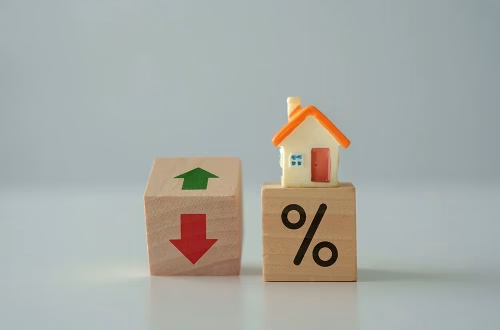How Do I Compare Mortgage Refinance Rates? A Complete Guide
Summary:
Comparing mortgage refinance rates is crucial for homeowners, investors, and business owners looking to lower monthly payments, reduce interest costs, or adjust loan terms. With fluctuating market conditions, securing the best refinance rate can save thousands over the life of a loan. This guide breaks down the refinancing process, explains different loan types, and highlights key factors to consider when evaluating lenders. By understanding how to compare rates effectively, borrowers can make informed financial decisions and avoid costly mistakes.
What This Means for You:
- Lower monthly payments: Comparing rates helps identify lenders offering the most competitive terms, potentially reducing your housing expenses.
- Faster equity building: A lower rate means more of your payment goes toward principal rather than interest.
- Improved financial flexibility: Refinancing can free up cash flow for investments, home improvements, or debt consolidation.
- Warning: Be cautious of lenders offering rates significantly below market averages, as these may come with hidden fees or unfavorable terms.
How Do I Compare Mortgage Refinance Rates?:
“How Do I Compare Mortgage Refinance Rates?” Explained:
Mortgage refinance rates represent the interest percentage lenders charge when you replace your existing home loan with a new one. These rates fluctuate based on economic factors like the Federal Reserve’s monetary policy, inflation, and housing market conditions. When comparing refinance rates, borrowers should examine both the advertised rate and the annual percentage rate (APR), which includes additional fees and costs associated with the loan.
In today’s market, refinancing makes sense when you can secure a rate at least 0.5% to 1% lower than your current mortgage. However, the decision should also consider how long you plan to stay in the home and whether you’ll recoup closing costs through interest savings. Current trends show that borrowers with excellent credit (740+) typically qualify for the most favorable refinance rates.
“How Do I Compare Mortgage Refinance Rates?” Types:
Fixed-rate mortgages offer stability with consistent payments throughout the loan term, ideal for those planning long-term homeownership. Adjustable-rate mortgages (ARMs) typically start with lower rates but carry the risk of future increases after the initial fixed period. Government-backed options like FHA and VA refinance loans often have more flexible qualification requirements but may include additional fees.
Cash-out refinancing allows homeowners to tap into equity while refinancing, but usually comes with slightly higher rates. Rate-and-term refinancing focuses solely on improving loan terms without changing the principal balance. Jumbo loans for high-value properties often have different rate structures than conforming loans, requiring specialized comparison approaches.
Requirements of “How Do I Compare Mortgage Refinance Rates?”:
Lenders evaluate several factors when determining refinance rates: credit score (minimum 620 for conventional loans), loan-to-value ratio (typically below 80% to avoid PMI), debt-to-income ratio (usually below 43%), and stable income history. Homeowners should gather recent pay stubs, tax returns, bank statements, and information about their current mortgage before comparing rates. Those with significant home equity and excellent credit typically qualify for the most competitive refinance offers.
“How Do I Compare Mortgage Refinance Rates?” Process:
1. Check your credit: Obtain free credit reports from AnnualCreditReport.com and correct any errors before applying. Scores of 740+ typically secure the best rates.
2. Gather documentation: Prepare proof of income, assets, and information about your current mortgage to streamline the comparison process.
3. Shop multiple lenders: Compare offers from at least 3-5 lenders including banks, credit unions, and online lenders. Request Loan Estimates to compare APRs and fees accurately.
4. Lock your rate: Once you identify the best offer, consider locking the rate to protect against market fluctuations during processing.
5. Complete underwriting: The lender will verify your information, order an appraisal, and finalize loan terms before closing.
Choosing the Right Finance Option:
When comparing refinance rates, look beyond the advertised interest rate to consider the APR, loan term, closing costs, and prepayment penalties. Online rate comparison tools can provide initial benchmarks, but personalized quotes from lenders will be more accurate. Be wary of lenders who won’t provide a Loan Estimate or who pressure you to commit before you’re ready.
Consider working with a mortgage broker who can shop multiple lenders simultaneously, though this may involve additional fees. Timing matters – rates often dip on certain days of the week or during slower housing market periods. Most importantly, calculate your break-even point (when savings exceed costs) to ensure refinancing makes financial sense for your situation.
People Also Ask:
How much does it cost to refinance a mortgage?
Refinancing typically costs 2-5% of the loan amount in closing fees, including appraisal, origination charges, title insurance, and prepaid items. Some lenders offer “no-closing-cost” refinances where fees are rolled into the loan or offset by a slightly higher interest rate.
How often can you refinance your home?
There’s no legal limit on refinancing frequency, but most lenders require at least 6-12 months between refinances. Waiting periods may apply for certain loan types, and frequent refinancing could raise red flags with underwriters unless justified by significant rate improvements.
Does refinancing hurt your credit score?
Refinancing causes a temporary dip (typically 5-15 points) due to the hard credit inquiry and new account opening. However, responsible management of the new loan can rebuild your score over time. Multiple rate shopping inquiries within a 45-day window typically count as a single inquiry for scoring purposes.
Is it better to refinance with your current lender?
Current lenders sometimes offer streamlined refinancing with reduced paperwork and fees, but you should still compare their offer with competitors. Loyalty doesn’t always translate to the best rates, so approach this as a business decision rather than an emotional one.
How long does the refinance process take?
From application to closing typically takes 30-45 days, though some lenders offer expedited refinancing in as little as 15 days for qualified borrowers. Delays often occur due to appraisal scheduling, document verification, or title issues.
Extra Information:
CFPB Loan Estimate Explainer – Understand how to read and compare the standardized Loan Estimate form that lenders must provide.
Freddie Mac PMMS – Track weekly average mortgage rates to benchmark refinance offers against national averages.
FICO Refinance Calculator – Calculate potential savings and break-even points for different refinance scenarios.
Expert Opinion:
Comparing mortgage refinance rates requires both market knowledge and personal financial awareness. The best refinance decision balances short-term savings with long-term homeownership goals, considering factors like how long you’ll stay in the home and your overall financial picture. Borrowers who take time to understand rate structures, shop multiple lenders, and read the fine print consistently achieve better refinancing outcomes than those who rush into decisions based solely on advertised rates.
Key Terms:
- best mortgage refinance rates comparison
- how to shop for refinance rates effectively
- fixed vs adjustable refinance rate differences
- refinance rate lock strategies
- no cost refinance rate tradeoffs
- refinance rate break-even calculation
- credit score impact on refinance rates
*featured image sourced by Pixabay.com
Automatic Mortgage Calculator
Welcome to our Automatic Mortgage Calculator 4idiotz! Please just add your figures in the correct sections below and the Automatic Mortgage Calculator will automatically calculate the results for you and display them at the bottom of the page.




